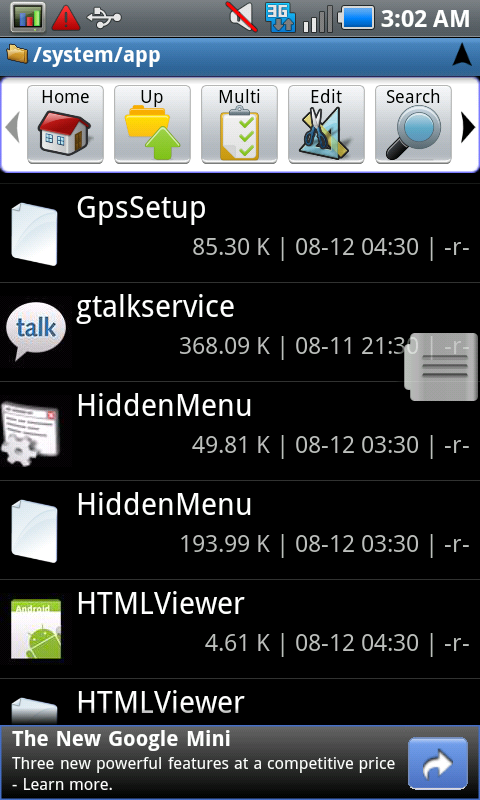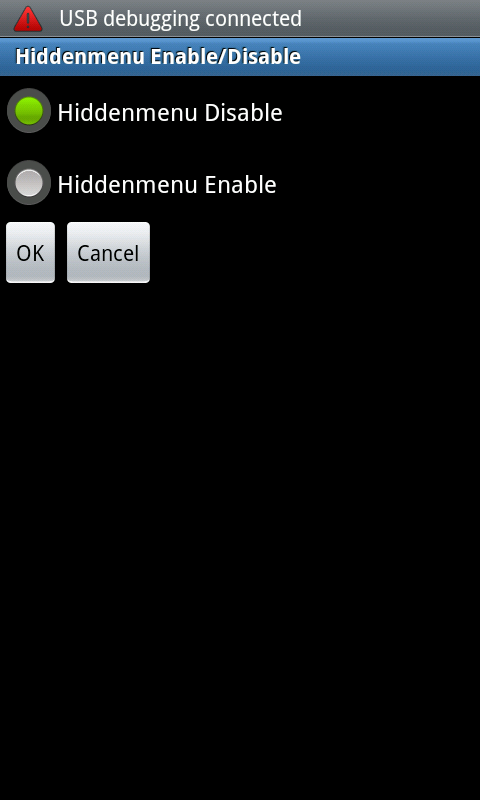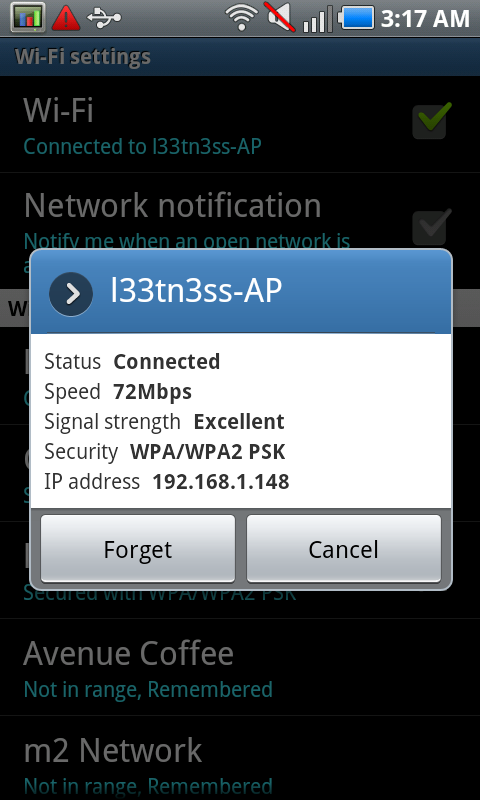Samsung Fascinate Review: Verizon's Galaxy S Smartphone
by Brian Klug on October 5, 2010 12:01 AM EST- Posted in
- Smartphones
- Samsung
- Galaxy S
- Fascinate
- Mobile
Cellular and WiFI Performance
The Fascinate doesn't have any antenna problems or weird baseband quirks. I experienced stable data connections and calls. We still run the phone through our now-regular tests to determine attenuation from holding devices in different positions.
| Signal Attenuation Comparison in dB—Lower is Better | |||||||
| Cupping Tightly | Holding Naturally | On an Open Palm | |||||
| Samsung Fascinate | 10.0 | 5.0 | 0.0 | ||||
| Droid 2 | 11.5 | 5.1 | 4.5 | ||||
| BlackBerry Torch | 15.9 | 7.1 | 3.7 | ||||
| Dell Streak | 14.0 | 8.7 | 4.0 | ||||
| Droid X | 15.0 | 5.1 | 4.5 | ||||
| iPhone 4 | 24.6 | 19.8 | 9.2 | ||||
| iPhone 3GS | 14.3 | 1.9 | 0.2 | ||||
| HTC Nexus One | 17.7 | 10.7 | 6.7 | ||||
The Fascinate (like the Epic 4G) seems to only expose signal changes in 5 dBm steps. Like Anand in the Epic review, I measure exactly the same thing. It's a bit frustrating to measure, but I managed to do so on the Fascinate after taking a lot of data - it didn't change. Unsurprisingly, attenuation is completely in line with what we've seen for other typical smartphones, sans iPhone 4. It's a bit frustrating that the radio stack doesn't show more granularity like other Android devices I've played with (all of them to date have showed me signal in 1 dBm steps), so I was determined to find more.
Just about every phone has special dialer codes. They're usually prefixed with "##" or asterisks, and just about every Android device has the somewhat famous "*#*#4636#*#*" special menu for doing basic things. The Captivate and Vibrant have gotten quite a bit of attention for having extremely thorough secret dialer codes, something I seriously favor in any device.
Regardless, I set out to discover whether any internal dialer codes could reveal more hardware information than I was seeing in Android through the UI and normal APIs.
To do so, I searched through the .apk files inside /system/app. Android package files are essentially zip files with a number of other files for the Android platform inside, including AndroidManifest.xml. Unfortunately, that XML file is encoded in binary, and requires some special unpacking. Regardless, I searched through and found lots of tasty goodness inside the ever so auspiciously-named hiddenmenu.apk file.

I found what I think are the Fascinate's internal codes, but none of the dialer prefixes I can think of work. Searching through everything in the Samsung GPL code repository for SCH-i500 (the Fascinate's model name) thoroughly revealed nothing either. The Samsung GPL code repository is here, just search SCH-i500 and you'll get the whole thing. It's possible that I missed the dialer code prefixes in there, but at the end of the day I couldn't find them. I also manually tried everything I could think of.
If you're so inclined, that AndroidManifest.xml file is up on pastebin here. There's a few interesting things inside. At the end of the day, however, I couldn't make anything work.
Update:
With the help of a friend with access to more information than I ;), I was able to finally figure out how to enable secret codes on the Fascinate. It's one of the most complicated procedures I've seen on a phone to date, but not impossible:
In the dialer, enter *#83786633 and tap the home button. Now, go back into the dialer, clear anything still in the dialer completely (the first code should still be there), and enter *#22745927. You'll be prompted for an SPC code, which should be 000000. Now you should get dumped to a screen like this:

Toggle enable, hit ok, and then things should work. This is the hiddenmenuenable apk I spent forever trying to get to. The dialing prefix is then *# with a suffix of # which is just like the other Galaxy S phones I've seen. Even then, the dialer codes are somewhat obfuscated - the only one I've found so far is #*4636*1111# which brings up the testing menu standard to other Android devices. I'm sure there are more out there.

Finally, I ran well over 100 speedtests on the Fascinate using the SpeedTest.net application, and averaged a downstream speed of 0.888 megabits/s, and upstream speed of 0.673 megabits/s. That's roughly in line with performance around town, with spikes up to 1.8 megabits/s of downstream near a tower.
WiFi Performance
The Fascinate negotiates a 72 megabit/s link with my 802.11N network - faster than the 65 megabits/s I've seen which is the bare minimum required to meet 802.11N requirements.

Wireless range on the Fascinate isn't quite as far as the EVO 4G or iPhone 4. I can make it a few more meters to the curb before falling off my AP on other devices. That said, the WiFi performance itself is not bad - 20 megabits/s on my 802.11n network downloading a 100 MB PDF.

There's also tethering support on the Fascinate, however the device I had time with wasn't provisioned for access and I couldn't test it. I could however get to the provisioning portal Verizon has, and that worked fine, but I couldn't tell if there were any hotspot issues like the Droid 2 had.










73 Comments
View All Comments
metafor - Tuesday, October 5, 2010 - link
That seems to be a common misconception. Just think about it, the processor is somewhere around ~500mW doing an intensive task. Compare that to an RF radio chip that eats 2W or so while communicating to a 3G cell tower. Or the 2-3W display....The App Processor is a small percentage of overall power draw.
strikeback03 - Tuesday, October 5, 2010 - link
Agreed, checking the power usage utility on Android it isn't uncommon to see the screen drawing the vast majority of the power. Which AMOLED has the potential to help with if there were a way to format websites to be more friendly to it (i.e. no white backgrounds).metafor - Tuesday, October 5, 2010 - link
I'm personally banking on either Pixel Qi or Mirasol improving to the point where they can take over being the displays used. The power savings would warrant any apparent difference in image quality as long as it's "good enough".JimmiG - Wednesday, October 6, 2010 - link
"Just think about it, the processor is somewhere around ~500mW doing an intensive task. Compare that to an RF radio chip that eats 2W or so while communicating to a 3G cell tower. Or the 2-3W display...."I guess you're right. I can play games and watch video on my HTC Desire without using much battery, but 3G browsing absolutely kills battery life. My daily routine involves heavy 3G web browsing on the 1-hour commute to school by train, then the phone spends most of the day in standby, then another hour of heavy usage on the way home in the afternoon. This is enough to run the battery down to ~10% by the time I get home, if I'm lucky enough to have it last the whole day.
But then, how does the iPhone4 manage nearly 7 hours of 3G browsing? Does it use a different radio chip, is it the network, or what?
metafor - Wednesday, October 6, 2010 - link
RF chips don't really vary that much. I would take a guess that it's good software management. What you don't realize is that most of the time you're browsing, you're not actually loading data. You have a burst of data as the website loads, but then it stops.I've noticed on my iPhone that periods of inactivity -- while I'm reading a webpage -- would cause the signal bar to drop a bit. It would go back up once I clicked on a link.
I suspect the software is putting the RF chip in a low-power mode more aggressively than HTC equivalents.
A lot of people discount it but software throttling is the single-most effective way of reducing power consumption.
ssj4Gogeta - Tuesday, October 5, 2010 - link
Is there any chance you'll do an I9000 review? It's the European/Asian version of the Galaxy S. It comes unlocked, doesn't have loads of crap preinstalled, and trades the LED flash for a front VGA cam. It also doesn't have a search button, but you can long-press the menu button to search.Also, please consider trying the voodoo lag fix in your future Galaxy S reviews.
http://project-voodoo.org/
It basically changes the system partition file system from RFS to EXT4, which makes the phone noticeably faster and smoother (no stalling while installing apps, no stuttering..)
8steve8 - Tuesday, October 5, 2010 - link
i personally have an international galaxy s with beta froyo rom (JPK), with lagfix, these are the numbers i get:Rightware BrowserMark:
35345 : my galaxy s 2.2
29018 : fascinate 2.1
sunspider:
07375.8ms : my galaxy s 2.2
15835.0ms : fascinate 2.1
linpack:
14.399 MFLOPS : my galaxy s 2.2
08.157 MFLOPS : fascinate 2.1
NeoCore Benchmark:
55.6FPS : my galaxy s 2.2
55.6FPS : fascinate 2.1
quadrant:
2000ish : my galaxy s 2.2 w/lagfix
0800ish with my galaxy s 2.1 stock
the phone ships with a terrible filesystem setup, causes severe lag over time... as shown in the quadrant score which does some IO stuff... this is fixable with root and a lagfix app...
and gps works about as good as my nexus one
(although in 2.1 builds of the firmware GPS was terrible)
this has been said by everyone, but the 4" SAMOLED displays on these things are sick... makes a nexus one display look really dated, and although props to the iphone for finally getting hi-res, 3.5" just seems comparably too small.
annoying it shipped so broken, but once dealt with, a beautiful device and over-all experience
ssj4Gogeta - Wednesday, October 6, 2010 - link
You don't even require root for voodoo lagfix. It comes in an update.zip and changes the filesystem to ext4.webmastir - Tuesday, October 5, 2010 - link
fantastic review. this is why i love this site! great job & great info.Shadowmaster625 - Tuesday, October 5, 2010 - link
If you can forget that a $500+ piece of hardware is in your pocket, then you need to be... outsourced.